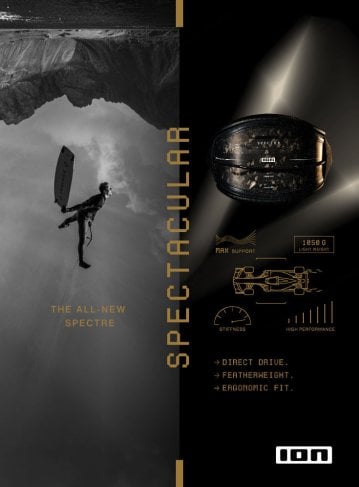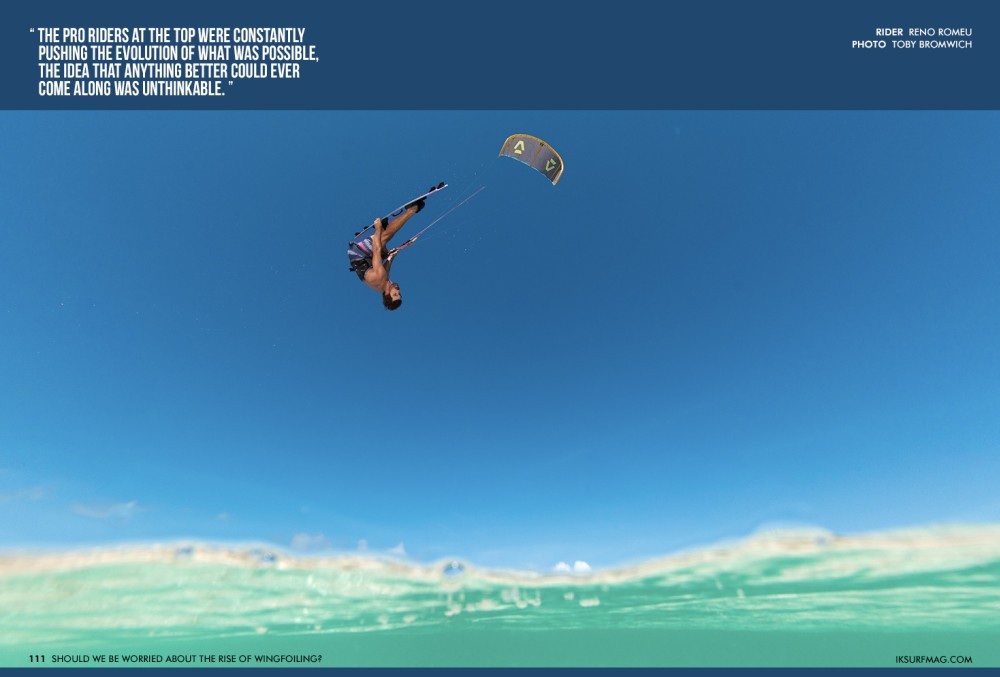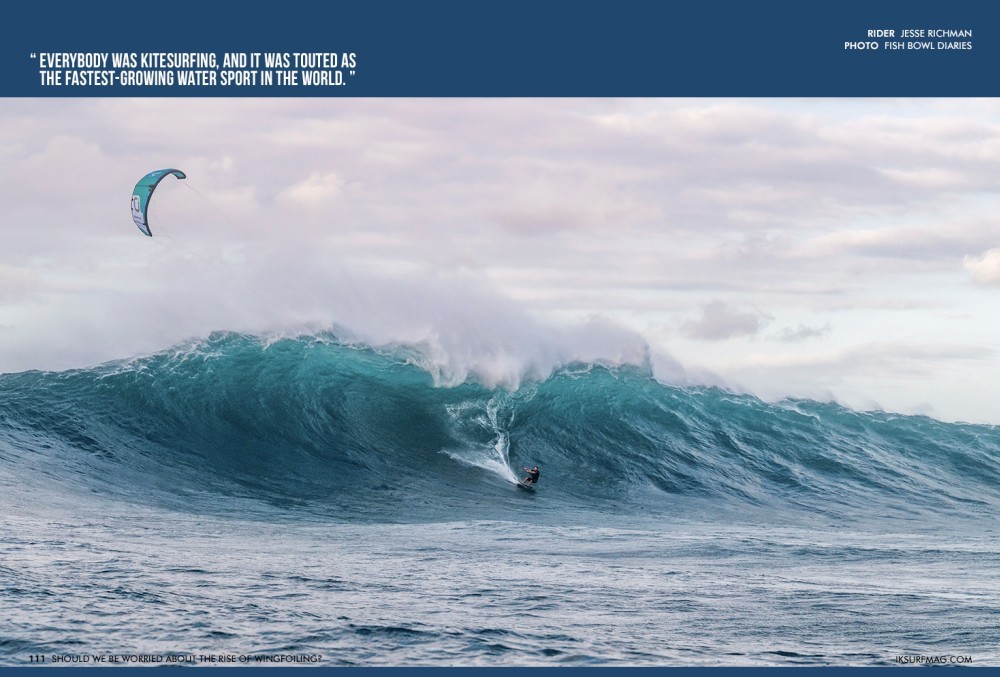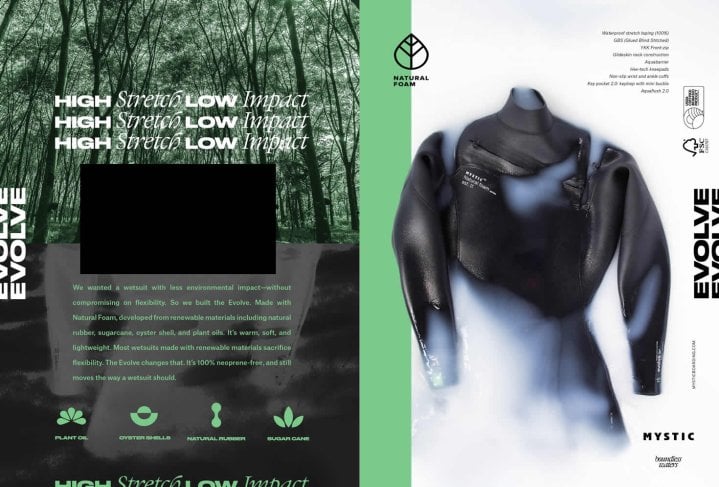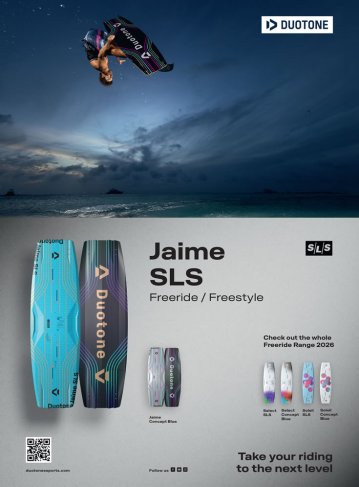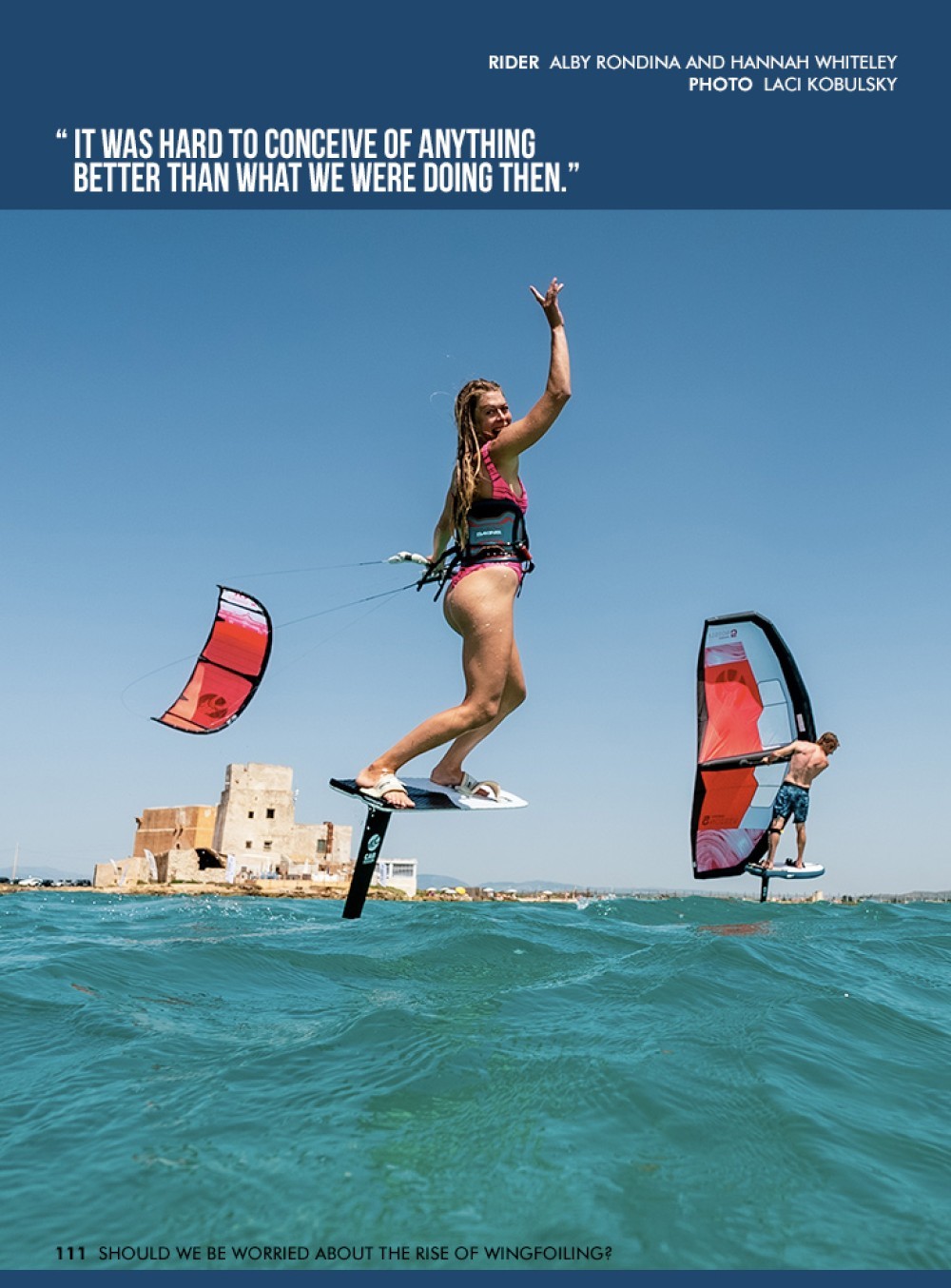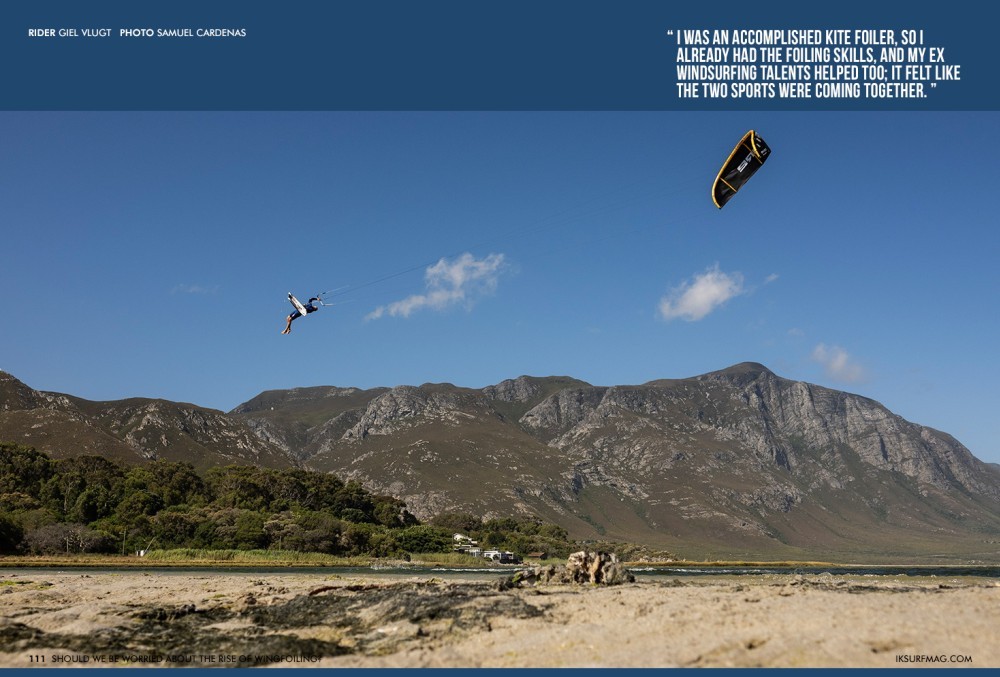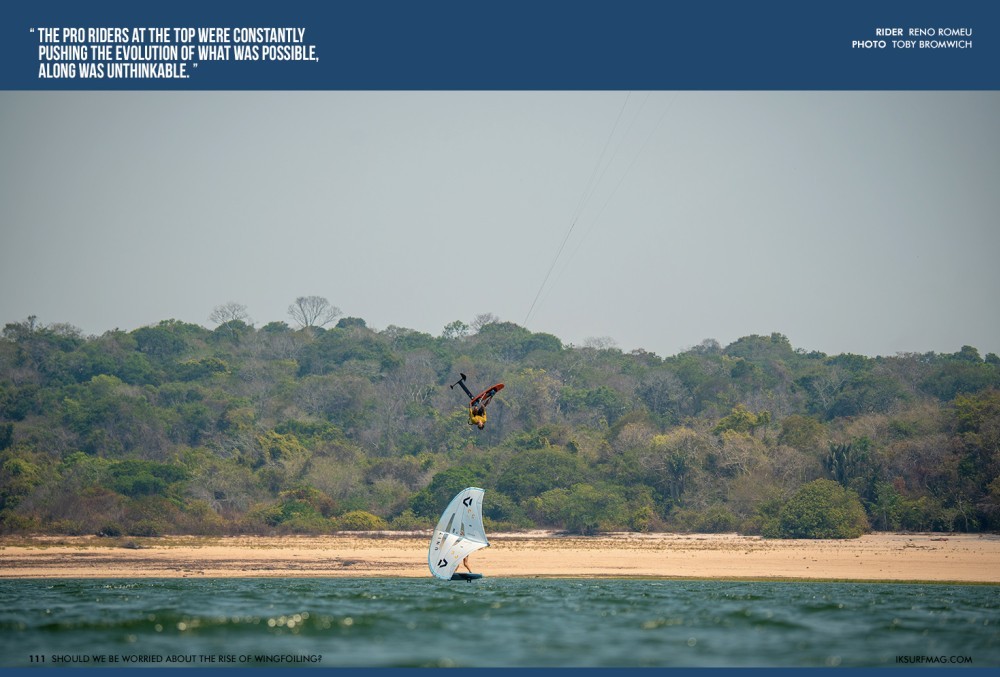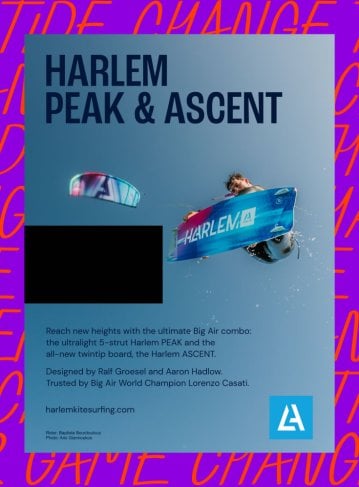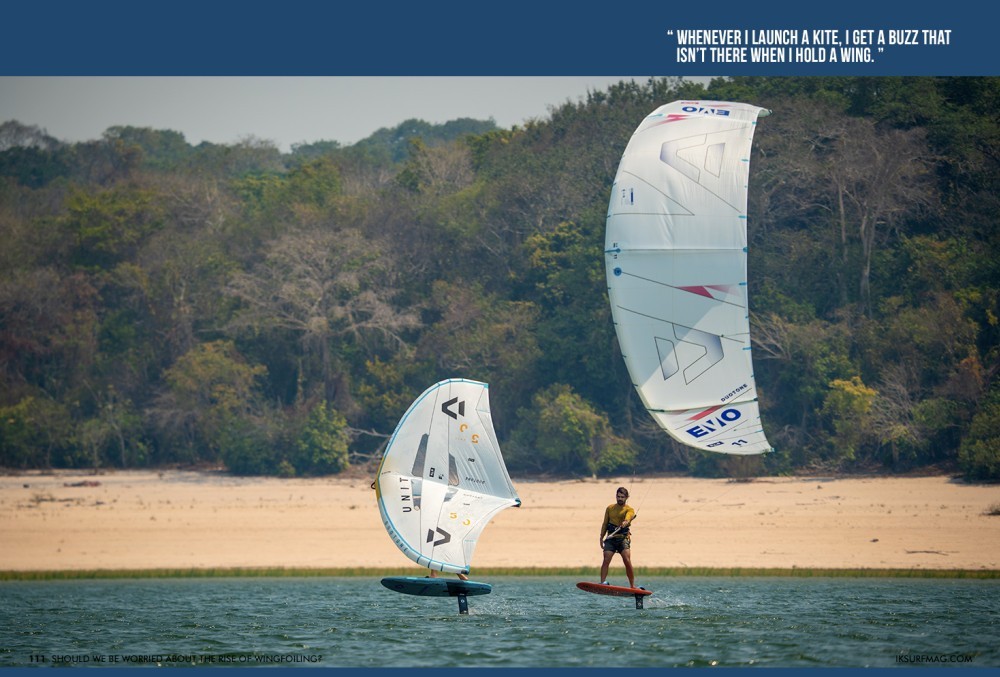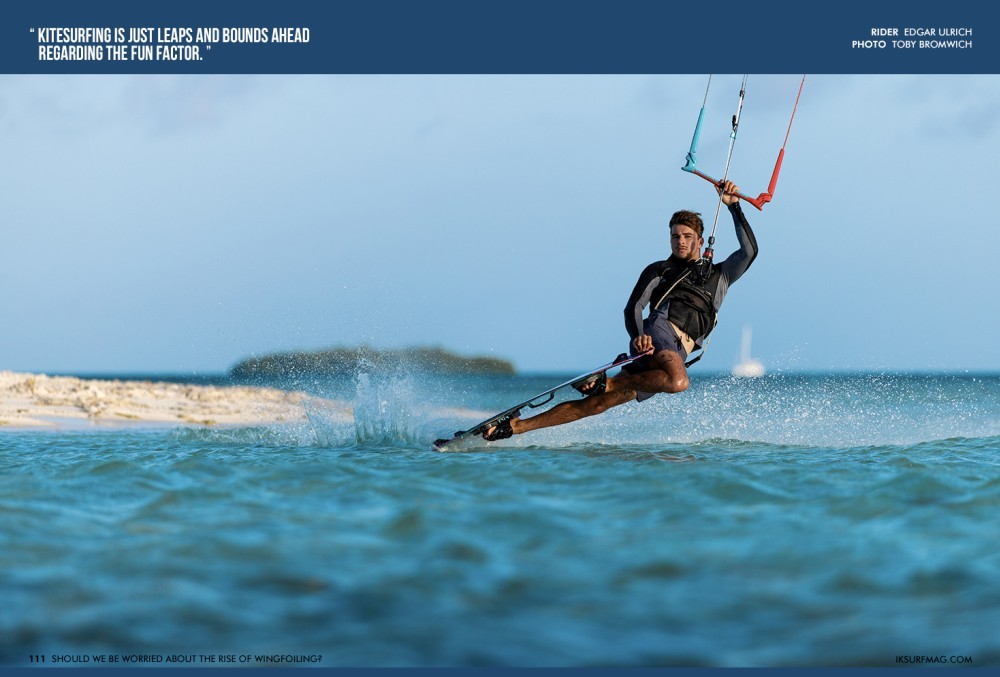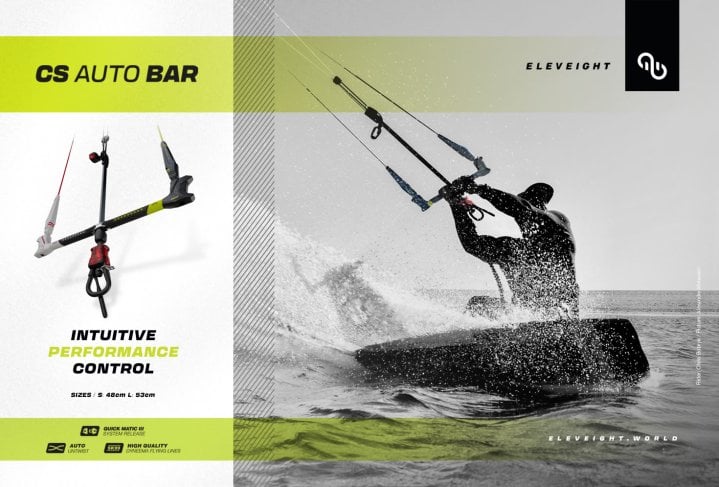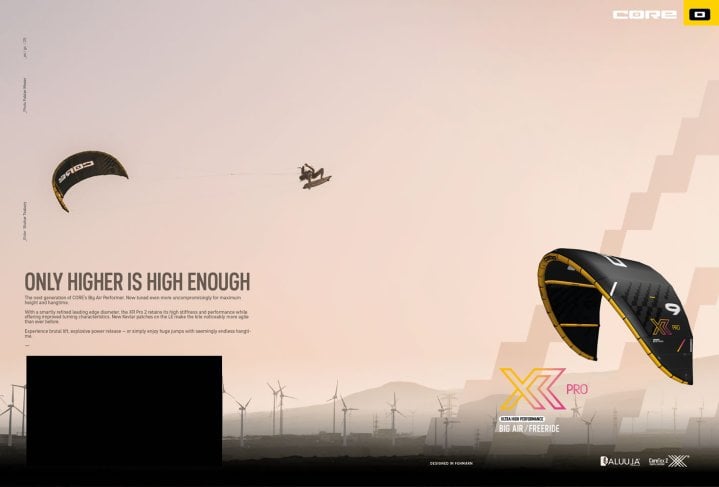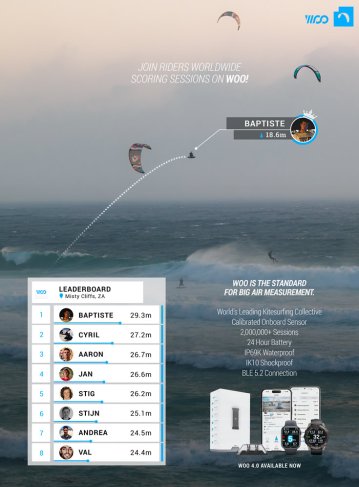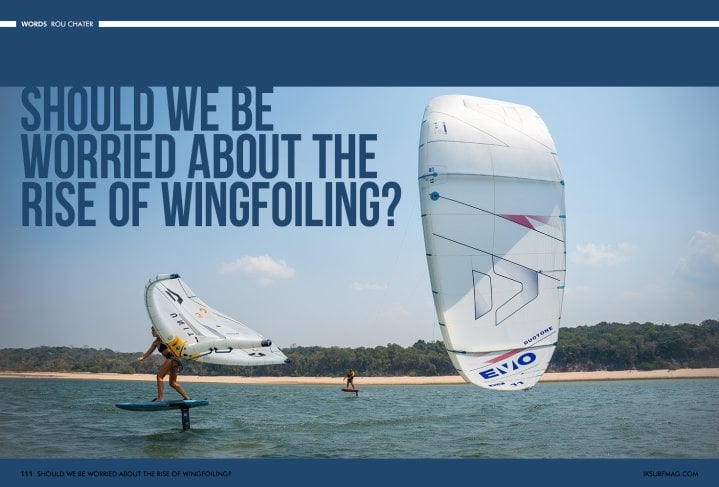
Should We Be Worried About The Rise Of Wingfoiling?
Issue 111 / Wed 25th Jun, 2025
Should we be worried about the growth of wing foiling? Are lots of kiters making the switch? Is it going to take over kitesurfing? In this feature, Rou Chater dives into decades of water time to ask: Is kitesurfing being replaced, or is this just the latest wave in our sport’s evolution? Let’s find out!
Does anyone reading this remember the phrase “windsurfing is cancelled”? If you were lucky enough to be one of the pioneers of our sport back in the day, it’s a phrase you will know well. Most of us were windsurfers back then, and at first we looked at kiting as a bit of a whacky upstart in 1998. But by 2000, the phrase “windsurfing is cancelled” was born.
I started windsurfing when I was 7 years old, so a mere 42 years ago, which is a number many younger readers will struggle to comprehend. Back then, windsurfing was the most incredible sport. It took the world by storm. There was a period during the 80s when pretty much everybody was windsurfing. I remember images of Hayling Island beach on the south east coast of the UK, and you couldn’t even see the sand because of all the windsurfing equipment lying on it. It was the coolest thing to do and remained that way for many years.
As windsurfing progressed, the equipment improved, and the sport became even more dynamic. As more disciplines became prevalent, it was hard to see how this sport could ever be improved. While the pro riders at the top were constantly pushing the evolution of what was possible, the idea that anything better could ever come along was unthinkable.
When we first saw kitesurfing in the late 90s, it looked kind of stupid, and no one really thought it would ever take off. I remember seeing the late Chris Calthrop struggling with a Flexifoil Blade ram air kite at one of my local spots, he ended up miles downwind with what can only be described as a bird’s nest of lines while the rest of us were pulling forward loops, back loops and having an absolute blast in what was perfect windsurfing conditions. We couldn’t really grasp what he was doing to himself!
As with any new sport, the development is really fast, and kite surfing was no different; it was only a matter of time before the sport started to make sense. It was early in 2000, and I was queuing up at the windsurfing shop to buy my first kite. Kitesurfing exploded around that time, and by 2004, it was really dominant on the water sports stage. Everybody was kitesurfing, and it was touted as the fastest-growing water sport in the world.
Many of those early kite surfing adopters were ex-windsurfers like me. At first, we mostly kept our windsurfing gear and used the kite to get out in lighter winds, but as the equipment got better, the windsurfing gear gathered more dust, and the phrase “windsurfing is cancelled” became real.
There are a lot of similarities here with wingfoiling. For many years, we’ve considered kitesurfing the absolute pinnacle of water sports, especially as it offers a diverse way to enjoy the wind and the ocean. Originally, we used boards that didn’t work, and then the twin tip arrived, transforming the sport. Followed by the surfboard and the foil board, throw in a little bit of niche like a skimboard and the wake skate and even a McDonald’s tea tray, yes that happened once, and you get an idea of how diverse kitesurfing is in the number of craft that you can enjoy time on the water with. Kitesurfing can be so many things with many different ways to enjoy it…
If you had asked any of us in 2017 or 2018 whether we thought a better sport could come along to rival kitesurfing, the answer would have been a straight no; it was hard to conceive of anything better than what we were doing then. Kitesurfing held numerous world speed records, was faster around a race course than any other craft and could get you jumping higher than anything else on the water. The amount of fun and joy it gave was part of the addiction that led to it becoming so popular, and let’s not forget you can pack it all up in a small car, drive home and store all the gear in a small flat. Kitesurfing was as unique as it was incredible.
It was almost impossible to think it could ever get any better until it did.
Robby Naish launched the first “Wing Surfer” in 2019 to a slightly bemused audience at the Naish dealer meeting in Tarifa. There were only a couple of setups available at that meeting, and many people were in attendance, so it was quite hard to get a go on this new contraption that Robby had been so enthusiastic about.
Towards the end of the week, I still hadn’t managed to have a go, and I felt that if I didn’t get one, I would be letting myself and you, our readers, down if I hadn’t tried this new water sport. At the time, no one could even decide what to call. Naish favoured wingsurfing, but now it is known as wingfoiling. My first attempt didn’t go that well. I was underpowered as the wing was only a four-meter wing, and the big board and foil weren’t quite enough to get me up onto the foil. As anyone who’s tried winging knows, it’s incredibly hard work when you aren’t foiling.
I persevered and did manage to get a couple of runs up on the foil. I was an accomplished kite foiler, so I already had the foiling skills, and my ex windsurfing talents helped too; it felt like the two sports were coming together. However, all of the effort that I put into it had exhausted me, not to mention the fact that I drifted miles downwind. My session ended with a long walk back up the beach.
I was left wondering whether this sport would take off. I’d only had a quick experience of it, I was pleased that I’d given it a try, but in no way did I think it would rival kite surfing. Let alone come close to the feelings I got when flying a kite on the water with a surfboard, a twin tip, or a hydrofoil. It didn’t take long for other brands to follow suit. Robby Naish is often way ahead of the curve in these new water sports, and nobody wanted to miss out.
As wing foiling became more popular in 2020, I managed to get hold of some equipment and put some time into trying to learn this new sport properly. I’m one of these riders who likes to learn new things. I get my most enjoyment when I’m being challenged and trying to master something on the water, whatever that might be. The challenge of trying to learn to wingfoil when nobody was around to teach you was pretty hard, but this challenge kept me coming back for more.
As kiters, we avoid certain conditions when the wind is offshore or super gusty. I was quickly discovering these conditions were perfect for the wing. As with any new sport, it quickly took over from kitesurfing, as I was trying to log the hours to crack it. I’d discover new beaches where kiting couldn’t take me and had more sessions on the water than ever before.
I’m sure you’ve heard similar stories and perhaps had a similar experience. The thrill of riding long unbroken waves, the fun of being on the water when the conditions weren’t suitable for kite, and wing foiling had me hooked. I certainly wasn’t alone.
Don’t get me wrong, I still enjoyed kiting when the conditions were good, but wingfoiling added something extra to my trips to the beach, I was getting skunked less, and I was logging more water time than ever. Before you stop reading and decide I’ve taken leave of my senses and become a full-time wingfoiler, stay with me…
It was definitely taking over in that early honeymoon period, but like any good relationship, the buzz soon fades… Once I’d cracked it, the thrill of learning went. As soon as I’d mastered all the tacks and gybes and was confidently riding bigger and bigger waves I suddenly found that those crappy conditions I was stoked about before were no longer doing it for me.
Suddenly, wing foiling, like kiting, needed a specific set of circumstances to get me really excited! I log every session I do on the water. I like looking back and gauging the success of the year by the amount of water time I get. This also lets me know how much time I spend winging and kitesurfing each year.
I checked the stats for this article and was surprised myself. I had winged more than kited for at least two years while learning and enjoyed winging. However, it turns out the only year where winging has beaten kiting is this one, 2025, and thats only because it’s been the worst year for wind in recent memory, and I’ve barely done either sport but marginally winged more than I’ve kited.
The purpose of this article was to address the sometimes genuine worry of readers that kiting is being cancelled by wingfoiling. I know a few kiters who sold all their gear and just winged full-time. There are plenty of beaches around the world that used to be full of kiters and are now flooded with wingfoilers. It’s a concern many of us have. We love this sport, and we don’t want it to go away.
What might surprise you is that kiting is very much not being cancelled by wingfoiling. Most brands still sell way more kite products than they do wing gear, a fact that surprises many people. Kiting is what is keeping the watersports industry going globally at the moment, and there are plenty of places where kitesurfing is still very much the number one watersport on the beach.
What matters, though, and I say this with all my heart, is that kitesurfing pulls the pants down on wingfoiling any day of the week. Whenever I launch a kite, I get a buzz that isn’t there when I hold a wing. When I hit the water, the speed and power cast a spell over me that is hard to shake off. Boosting a huge air when it’s howling, smashing the lip of a wave and throwing a load of spray, even kitefoiling feels much faster, more dynamic and more exciting than wingfoiling.
If you used to kite and now just exclusively wing, I urge you to revisit our incredible sport. If you kite and wing, then I know you will feel the same way as me, perhaps the most telling fact is this…
Look at the top pro riders within the sport; most came to it fresh or from a windsurfing background. Many of them can’t kite and probably won’t ever kite. Those riders frothing on a parawing will probably never know the feeling of kite foiling and how awesome that is. The ones sending massive jumps on wings will never really appreciate what it’s like to throw a mega loop when it’s howling… And the wing foilers who are now shredding in the waves, will they ever really appreciate the feeling of carving huge hacks on a surfboard?
In most cases, there are a few exceptions, but when you think of all the pro kiters who are still pro kiters and didn’t switch, it backs up my point. Wingfoiling is here to stay, but kitesurfing is just leaps and bounds ahead regarding the fun factor. One thing we can all probably agree on, though, is that windsurfing is most definitely cancelled, most of them these days are on the wing, which is why it might seem like they are taking over…
Ask yourself not when you last saw more kiters than wingers at the beach, but when was the last time you saw a lot of windsurfers…
As a kiter, you are one of the privileged few human beings on this planet who will ever know the true feeling our incredible sport gives us. There is nothing else quite like it. Other sports come close, but give me some good waves, a kite, and a surfboard any day of the week!
By Rou Chater
Rou has been kiting since the sports inception and has been working as an editor and tester for magazines since 2004. He started IKSURFMAG with his brother in 2006 and has tested hundreds of different kites and travelled all over the world to kitesurf. He's a walking encyclopedia of all things kite and is just as passionate about the sport today as he was when he first started!


